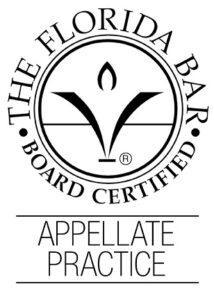Miguel J. Chamorro
Specificity seldom hurts in litigation. It is indispensable if you want to prevent an arbitrator from arbitrating something you think a court should adjudicate instead. But although you may be right about the non-arbitrability of a claim or issue, to make the point in court—and avoid the arbitral tribunal altogether—you must properly challenge delegation. This is a confounding task for any litigant or party in arbitration.
The Ninth Circuit recently added to the jurisprudence governing how to properly challenge the delegation clause of a federal arbitration agreement. In Bielski v. Coinbase, Inc., 2023 WL 8408123 (Dec. 5, 2023), the Ninth Circuit purports to align itself with the Second, Third, and Fourth Circuits in requiring a “relatively low barrier” for a party to properly make the challenge: “[I]f a party’s challenge mentions and specifically relates to the validity of the delegation provision in its opposition to the motion to compel arbitration or other pleading, the federal court has a green light to consider those arguments.” Bielski, 2023 WL 8408123, at *4.
The Ninth Circuit noted that its rule does not “align with” that of the Sixth and Eleventh Circuits.[1] But are the Circuit Courts truly not “aligned”? The concurrence in Bielski doesn’t think so, and this author agrees with it.
First, what is arbitrability?
Considering litigants’ propensity to conflate arbitration agreements with delegation agreements, a brief explanation of certain arbitration concepts—such as arbitrable, arbitrability, and gateway—is in order before jumping into the merits of Bielski.
Contracting parties may agree to arbitrate all or some disputes, such as the “merits” of their claims or the “arbitrability” of those claims (i.e., whether their claims are “arbitrable” in the first place). “But—wait for it—parties sometimes dispute whether an arbitrator should arbitrate arbitrability.” Attix v. Carrington Mortg. Servs, LLC, 35 F.4th 1284, 1288 (11th Cir. 2022). That’s where “delegation” provisions/agreements/clauses come into play.[2] When a party challenges delegation, “a court must decide who decides whether the parties will arbitrate.” Attix, 35 F.4th at 1288.
Arbitrability refers to the “gateway” (or “threshold”) questions about whether the merits of any claims arising from a contract, such as the “enforceability, scope, or applicability of the parties’ agreement to arbitrate their claims,” are subject to arbitration. Attix, 35 F.4th at 1295 (quotation omitted). Stated differently, arbitrability refers to “(1) whether a valid agreement to arbitrate exists, and if it does, (2) whether the agreement encompasses the dispute at issue.” Bielski, 2023 WL 8408123, at *3 (quotation omitted). By “default,” courts decide arbitrability issues. Attix, at 1395. See Bielski, at *3 (“an arbitration agreement ‘shall be valid, irrevocable, and enforceable, save upon such grounds as exist at law or in equity for the revocation of any contract.’”) (quoting FAA § 2). Under § 2 of the FAA, a court may adjudicate challenges to an arbitration agreement’s validity or enforceability based on “generally applicable contract defenses, such as fraud, duress, or unconscionability,” Rent-A-Center, W., Inc. v. Jackson, 561 U.S. 63, 68 (2010), or the assertion that another federal statute precludes arbitration. See Gilmer v. Interstate/Johnson Lane Corp., 500 U.S. 20, 27–35 (1991). Delegation agreements are controversial because they take this power from courts and delegate it to arbitrators, effectively limiting courts to deciding whether the delegation provision is valid or enforceable. See Bielski, at *4; Rent-A-Center, 561 U.S. at 69; Attix, at 1303.
A delegation provision is an agreement to arbitrate the arbitrability of the parties’ claims. See Henry Schein, 139 S. Ct. at 529. A delegation provision is distinct from the “primary” arbitration agreement to arbitrate the merits of claims arising from a contract, Attix, 35 F.4th at 1302, and is said to be “nested” within the primary arbitration agreement. See Henry Schein, 139 S. Ct. at 529. Thus, a dispute over whether an arbitrator should arbitrate arbitrability is a challenge to a delegation provision. A typical delegation provision, like the one in Bielski, states as follows:
This Arbitration Agreement includes, without limitation, disputes arising out of or related to the interpretation or application of the Arbitration Agreement, including the enforceability, revocability, scope, or validity of the Arbitration Agreement or any portion of the Arbitration Agreement. All such matters shall be decided by an arbitrator and not by a court or judge.
Bielski, at *2 (emphasis added).
How specific must your challenge to a delegation provision be?
Having established the difference between arbitration agreements and delegation provisions, one can properly address “what it takes to sufficiently challenge a delegation provision to ensure federal court review.” Bielski, at *4. In short, a challenge to a delegation provision must be specific to the delegation provision. In Bielski, the Ninth Circuit “distilled” the following two principles from the Supreme Court’s 2010 Rent-A-Center decision:
First, a party resisting arbitration must mention that it is challenging the delegation provision and make specific arguments attacking the provision in its opposition to a motion to compel arbitration. Second, a party may challenge the delegation provision and the arbitration agreement for the same reasons, so long as the party specifies why each reason renders the specific provision unenforceable. There are many reasons why a party may be required to use nearly identical challenges to the delegation provision and the arbitration agreement as a whole. Notably, nothing in Rent-A-Center requires fashioning completely distinct arguments.
Bielski, at *4 (citing Rent-A-Center, 561 U.S. at 74).
A challenge to a delegation provision may be substantively identical to a challenge to the arbitration agreement. Indeed, it is commonplace. But that may lead litigants to mistakenly believe that a challenge to an arbitration agreement encompasses a challenge to the delegation provision (or that tweaking the former will suffice for the latter). As always, the devil is in the details. Consider examples of arguments that were successfully asserted against both an arbitration agreement and its delegation provision, and those that failed.
Examples of delegation challenges from the purportedly “relatively low barrier” circuits, as the Ninth Circuit calls them.
In Rent-A-Center, which involved an employment-discrimination suit, the Supreme Court considered an employee’s opposition to his employer’s motion to compel arbitration on the basis that the arbitration agreement was unconscionable.[3] While the employee challenged “the validity of the contract as a whole … his opposition to Rent–A–Center’s motion to compel arbitration did [not] even mention the delegation provision…. none of [the employee’s] substantive unconscionability challenges was specific to the delegation provision.” Id. at 72-73 (emphasis added). In that sense, Rent-A-Center presented something of an outlier because not mentioning something during litigation is seldom beneficial for appellate review. It was fatal in Rent-a-Center, see at 75-76, and you likely guessed from the title of this article that it is fatal in delegation challenges. But other cases present closer calls. Consider the three cases cited by Ninth Circuit in Bielski as proof of its alignment on this issue with the Second, Third, and Fourth Circuits.
Gingras v. Think Fin., Inc., 922 F.3d. 112, 126 (2d Cir. 2019), involved arbitration clauses in loan agreements which required the application of tribal law (in derogation of federal and state consumer protection laws) and restricted all arbitral awards review by a tribal court that had the unfettered discretion to overturn an arbitrator’s award (in derogation of the “sharply limited federal court review of the arbitrators’ decisions as constrained by the FAA”).[4] Gingras, 922 F.3d. at 127-28. The borrowers applied these arguments to challenge the delegation provision as well as the entire loan agreement: “Their complaint alleges that ‘[t]he delegation provision of the Purported Arbitration Agreement is also fraudulent.’ That specific attack on the delegation provision is sufficient to make the issue of arbitrability one for a federal court.” Gingras, at 126 (internal citation omitted). This was enough for the Second Circuit to affirm the district court’s refusal to compel arbitration on grounds that the arbitration agreement was unconscionable. It was inconsequential that the challenge to the arbitration agreement “overlaps with the challenges to the balance of the loan agreement ….” Id., at 128.
In MacDonald v. CashCall, Inc., 883 F.3d 220, 226 (3d Cir. 2018),[5] the plaintiff challenged the provision of a loan agreement which required that all disputes be resolved through arbitration before a tribal arbitral forum that did not exist. Inevitably, the nonexistence of the arbitral forum undermined the entire arbitration agreement just as much as it undermined its delegation clause, and the litigant made sure to say so in its challenge:
His Complaint alleges that “[b]ecause the arbitration procedure described in the agreement is fabricated and illusory, any provision requiring that the enforceability of the arbitration procedure must be decided through arbitration is also illusory and unenforceable. Similarly, his brief opposing Defendants’ motion to compel arbitration states that “the delegation clause suffers from the same defect as the arbitration provision, and includes a section discussing this challenge.
MacDonald, 883 F.3d. at 227 (citations omitted). These explicit references to the delegation clause, though substantively identical to the arbitration agreement, were sufficient to challenge delegation. Thus, the district court did not err in considering whether the delegation clause was enforceable (and in holding that “the entire arbitration agreement, including the delegation clause, is unenforceable” because the designated arbitral forum was illusory). Id., at 232.
Gibbs v. Sequoia Cap. Operations, LLC, 966 F.3d 286, 293 (4th Cir. 2020),[6] involved loans with arbitration agreements whose terms, like those of Gingras, limited the arbitrator’s authority to provide awards to “remedies available under Tribal Law” (effectively forcing the borrower to waive statutory remedies). There, the argument “that the delegation clause was unenforceable because of the prospective waiver doctrine” was sufficient “to mount a challenge to the delegation clause.” Because the choice-of-law provisions in these arbitration agreements prevented the borrowers from “vindicating any federal statutory claims, they violate the prospective waiver rule. As a result, the delegation provisions—and thus the arbitration agreements—are unenforceable.” Id., at 293. Again, the same substantive argument operated against the delegation clause and the arbitration agreement, and both arguments were specifically made.
Let’s now turn to Bielski. Mr. Bielski specifically challenged the enforceability of the delegation clause at several points before the district court as procedurally and substantively unconscionable. Id., at *5. Mr. Bielski not only mentioned the delegation provision, but crafted arguments directly addressing its unconscionability. In line with the Rent-A-Center principle that one is not required to make completely distinct arguments as between an arbitration agreement and its delegation clause, the Ninth Circuit held that Mr. Bielski’s delegation challenge was not precluded simply because he “argued [that] the arbitration agreement was unenforceable for the same reasons [as the delegation clause] ….” Id. (citing Rent-A-Center, 561 U.S. at 74). Thus, the district court correctly considered the delegation challenge. Id.
Is there truly an intracircuit conflict regarding how to assert a delegation challenge?
The rule in Bielski was not novel, even within the Ninth Circuit.[7] What makes Bielski remarkable is its assessment that its rule:
is consistent with the rules in the Second, Third, and Fourth Circuits…. [which] require a relatively low barrier to entry: if a party’s challenge mentions and specifically relates to the validity of the delegation provision in its opposition to the motion to compel arbitration or other pleading, the federal court has a green light to consider those arguments.
Bielski, at *4. The Ninth Circuit considers its rule—and that of the Second, Third, and Fourth Circuits—to be not aligned with the Sixth and Eleventh Circuits, which “require litigants to provide more substance in their delegation provision challenge.”
Is there truly a nonalignment among the aforesaid circuits? The Concurrence in Bielski does not think so:
I do not agree with the [majority’s] characterization of the rule applied in other courts of appeals…. According to the [majority], our decision today contributes to a circuit conflict because, although several circuits agree with our approach, “[t]he Sixth and Eleventh Circuits require litigants to provide more substance in their delegation provision challenge.” The cited cases do not support that description.
Bielski, at *9 (Miller, J., concurring). This author likewise disagrees that the Sixth and Eleventh Circuits “require litigants to provide more substance in their delegation provision challenge.” Bielski, at *4.
Perhaps the two Sixth and Eleventh Circuit cases considered by Bielski are inadequate to illustrate the specificity with which a delegation clause must be challenged because a bigger issue in those two cases was whether an argument even applied to the delegation clause (as opposed to the arbitration agreement within which the delegation clause is contained). Let’s consider those two cases.
Examples of delegation challenges from the purportedly more stringent circuits.
In In re StockX Customer Data Sec. Breach Litig., 19 F.4th 873, 877 (6th Cir. 2021), the plaintiffs challenged the arbitration agreement in a website’s terms of service based on the infancy doctrine.[8] They argued that “the infancy doctrine ‘invalidates’ the [terms of service], rendering ‘the entire agreement unenforceable.’ At the same time, however, plaintiffs argue that the district court should have decided their ‘infancy doctrine defense’ because ‘it is an attack on the formation or existence of the contract’ as a whole.” In re StockX, 19 F.4th at 882 (citations omitted). The Sixth Circuit turned to the following explanation by the Supreme Court about “the two types of validity challenges” that arise in the arbitrability context:
“One type challenges specifically the validity of the agreement to arbitrate,’ and ‘the other challenges the contract as a whole, either on a ground that directly affects the entire agreement (e.g., the agreement was fraudulently induced), or on the ground that the illegality of one of the contract’s provisions renders the whole contract invalid.” Rent-A-Center, 561 U.S. at 70, 130 S.Ct. 2772 (brackets omitted) (quoting Buckeye, 546 U.S. at 444, 126 S.Ct. 1204). Courts may decide only the first type. See id. at 70-72, 130 S.Ct. 2772.
Id. at 877. The infancy defense, held the Sixth Circuit, “falls in the second category because that defense directly affects the enforceability or validity of the entire agreement.” Id. at 884.
The Sixth Circuit clarified that a party “may challenge both the entire agreement and a delegation provision under the same legal doctrine. But a party’s mere statement that it is challenging the delegation provision is not enough; courts must look to the substance of the challenge.” Id. at 885. And it held that the plaintiffs gave only lip service to the application of the infancy doctrine to the delegation clause as opposed to the website’s terms of service:
Here, plaintiffs’ infancy defense affects the validity or enforceability of “the whole contract,” as well as the agreement to arbitrate and its delegation provision, which are “part of that contract.” See Rent-A-Center, 561 U.S. at 71, 130 S.Ct. 2772. As such, plaintiffs were required to show that “the basis of [their] challenge [is] directed specifically” to the “delegation provision.” Id. at 71-72, 130 S.Ct. 2772 (emphasis added). They have failed to do so as they have simply recycled the same arguments that pertain to the enforceability of the agreement as a whole. Therefore, plaintiffs’ infancy defense is for an arbitrator to decide.
Id. at 885-86 (footnote omitted). In short, the Sixth Circuit considered the I-am-an-infant challenge to the delegation clause to be substantively identical to the I-am-an-infant challenge to the terms of service. The fact that the infants “recycled” their defense and applied it to the delegation clause was ineffective. Id. at 886. The infancy defense was for the arbitrator to decide.
Then, there is Attix v. Carrington Mortg. Servs, LLC, 35 F.4th 1284 (11th Cir. 2022), where the plaintiff sued his mortgage services provider.[9] Mr. Attix opposed the servicer’s motion to compel arbitration by arguing that the Dodd-Frank Wall Street Reform and Consumer Protection Act (the “Dodd-Frank Act”) prohibited enforcement of an arbitration agreement. See id. 35 F.4th at 1289. As phrased by the Eleventh Circuit, the challenge “relates only to the enforceability of the parties’ agreement to arbitrate the merits of his claims, not the enforceability of the parties’ separate agreement to arbitrate the arbitrability of his claims, and is therefore an issue for the arbitrator to decide.” Id. at 1294-95.
Mr. Attix argued that the Dodd-Frank Act prohibits the arbitration of his claims. He may have been right. But even if he was right, he was just “disputing the enforceability of the parties’ primary arbitration agreement. [His] challenge is not, however, about the enforceability of the parties’ delegation agreement.” Id. at 1307 (emphasis added). Mr. Attix did not explain how the Dodd-Frank Act bars an arbitrator from resolving the dispute over whether the agreement to arbitrate his claims falls within the scope of the Dodd-Frank Act’s antiarbitration protections. See Attix, at 1308. “Although Attix asserts that the [] terms and conditions fall within [the Dodd-Frank Act’s] purview, he points to no language in [the Dodd-Frank Act] that says a court, rather than an arbitrator, must decide whether he is right.” Id. The outcome of the delegation challenge may have been different, the Eleventh Circuit posited, if the Dodd-Frank Act contained a provision that forbade arbitrators from deciding arbitrability issues.[10] It did not. Mr. Attix simply challenged delegation by making the same argument about arbitrators being statutorily precluded from deciding the merits of a claim. To use the Sixth Circuit’s vocabulary, Mr. Attix “recycled” his argument and aimed it towards the delegation clause. In re StockX at 886.
Conclusion
The concurrence in Bielski may be correct in questioning whether the Ninth Circuits’ rule for assessing whether delegation challenges are properly before a district court is materially different from that of the Sixth and Eleventh Circuits. Nothing in Attix or In re StockX suggests that litigants in those circuits must “provide more substance,” Bielski, at *5, in their delegation challenges than litigants in other circuits. As the concurrence playfully phrased it:
I, at least, do not read our decision today to mean that merely stating, “I am challenging the delegation agreement,” would be sufficient. To the contrary, the [majority] opinion makes clear that “the party resisting arbitration must specifically reference the delegation provision and make arguments challenging it.”
Bielski, at *9 (Miller, J., concurring) (emphasis in original).
Ultimately, regardless of how much specificity is invested in a delegation challenge, a delegation challenge is bound to fail if it is a rehash of a challenge to the arbitration agreement as a whole (e.g., the infancy doctrine challenge in In re StockX) or if the challenge has no substantive application to the delegation clause (e.g., the antiarbitration protections of the Dodd-Frank Act’s in Attix). Instead of “more substance” to delegation challenge, what Attix and In re StockX require is a challenge that specifically applies to a delegation clause. So does Bielski and, indeed, Rent-A-Center. The focus is on the substance of the argument, not necessarily its specificity. Though specificity never hurts.
Regardless of which side you are on, FIDJ’s seasoned arbitration and trial lawyers can help. For more information on how we can assist in your trial o appellate needs, contact us at 305-350-5690 or info@fidjlaw.com
[1] In the federal context, arbitration is governed by the Federal Arbitration Act (the “FAA”), 9 U.S.C. 1 et seq.
[2] Pervading the litigation of challenges to arbitration agreements and their delegation clauses is the principle of severability, which is based on section 2 of the FAA. See Rent-A-Center, at 70-71 (“A party’s challenge to another provision of the contract, or to the contract as a whole, does not prevent a court from enforcing a specific agreement to arbitrate.”); Buckeye Check Cashing, Inc. v. Cardegna, 546 U.S. 440, 445 (2006) (“as a matter of substantive federal arbitration law, an arbitration provision is severable from the remainder of the contract.”).
[3] The delegation provision in Rent-A-Center provided that “provides that “[t]he Arbitrator … shall have exclusive authority to resolve any dispute relating to the … enforceability … of this Agreement including, but not limited to any claim that all or any part of this Agreement is void or voidable.” Rent-A-Center, at 68.
[4] The delegation provision in Gingras provided that the parties agree that “any Dispute … will be resolved by arbitration in accordance with Chippewa Cree tribal law.” The agreement defines “Dispute” as “any controversy or claim between” the borrower and the lender, “based on a tribal, federal or state constitution, statute, ordinance, regulation, or common law.” “Dispute” includes “any issue concerning the validity, enforceability, or scope” of the loan agreement itself or the arbitration provision specifically. See Gingras, 922 F.3d at 118 (citations omitted).
[5] The delegation provision in MacDonald provided that the arbitrator should resolve threshold questions “concerning the validity, enforceability, or scope of this loan or the Arbitration agreement.” MacDonald, 883 F.3d at 226.
[6] The delegation clause in Gibbs provided that the parties would arbitrate “any issue concerning the validity, enforceability, or scope of this Agreement or this Agreement to Arbitrate.” Gibbs, 966 F.3d at 290.
[7] The Ninth Circuit Bielski had previously decided Lim v. TForce Logistics, LLC, 8 F.4th 992 (9th Cir. 2021), in which it held that a delegation provision and arbitration agreement were unconscionable for the same reasons.
[8] The delegation provision in In re StockX required the arbitrator to decide “any claim that all or any part of th[e] Agreement to Arbitrate or the Terms is void or voidable.” In re StockX, 19 F.4th at 884.
[9] The delegation provision in Attix provided that “[t]he arbitrator shall also decide what is subject to arbitration unless prohibited by law. The arbitration will be administered by American Arbitration Association (“AAA”) under its Consumer Arbitration Rules, which are available at https://www.adr.org/active-rules.” Attix, at 1296-97. The second sentence incorporated rule 14(a) of the AAA’s Consumer Arbitration Rules, which provided: “The arbitrator shall have the power to rule on his or her own jurisdiction, including any objections with respect to the existence, scope, or validity of the arbitration agreement or to the arbitrability of any claim or counterclaim.” Attix, at 1297-98.
[10] To illustrate, the Eleventh Circuit came up with the following italicized provision, which it added to the existing (nonitalicized) text of the Act: “No agreement between a consumer and a creditor relating to a residential mortgage loan shall be applied or interpreted so as to bar a consumer from bringing an action in an appropriate district court of the United States arising from that agreement and asserted under any Federal law. Any controversy regarding whether a particular contract constitutes an agreement falling within the scope of this subsection shall be determined by an appropriate district court of the United States.” Attix, at 1308. Such a hypothetical provision might operate to bar arbitrators from arbitrating whether the Act even applies to the parties’ contract at all—a “quintessential arbitrability question.” Id.







